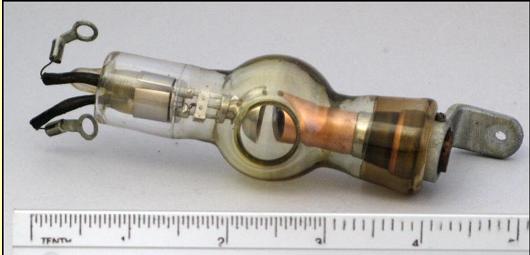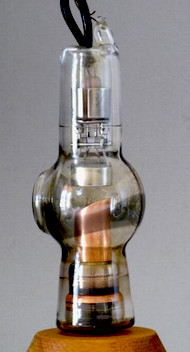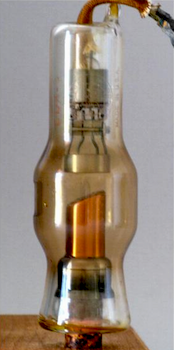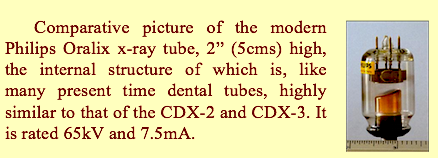CDX, CDX-2 & CDX-3 Dental Tubes
Ref. E2




The “CDX” (Coolidge Dental X-ray Unit) introduced by G.E. in 1921, was the first totally protected (electrically and radiation-wise) dental unit, where a small bulbar Coolidge tube and all the electric transformers and circuits were oil-immersed in a compact hermetically closed metal housing.
The Coolidge tube in the first CDX was described as “surprisingly small” compared to X-ray tubes in general use, and particularly when compared to the air-cooled dental right angle tube. The CDX tube is only 4”(10 cm) long, and was rated 45 kV and 10 mA. As in early Coolidge tubes, the filament is a flat spiral inside a hemispheric cup.
This CDX-2 tube, is the 1930’s version of the first CDX tube, of the same shape and size, equally built of lead-glass with the exception of the output port, and where the line-focus principle was adopted allowing improved ratings (60kV and 10mA).
The CDX-3 tube, of the late thirties or early forties, is similar in size and internal structure to the CDX-2 with a more “modern” shape, where the central part is cylindrical, with a ground-glass X-ray output port.